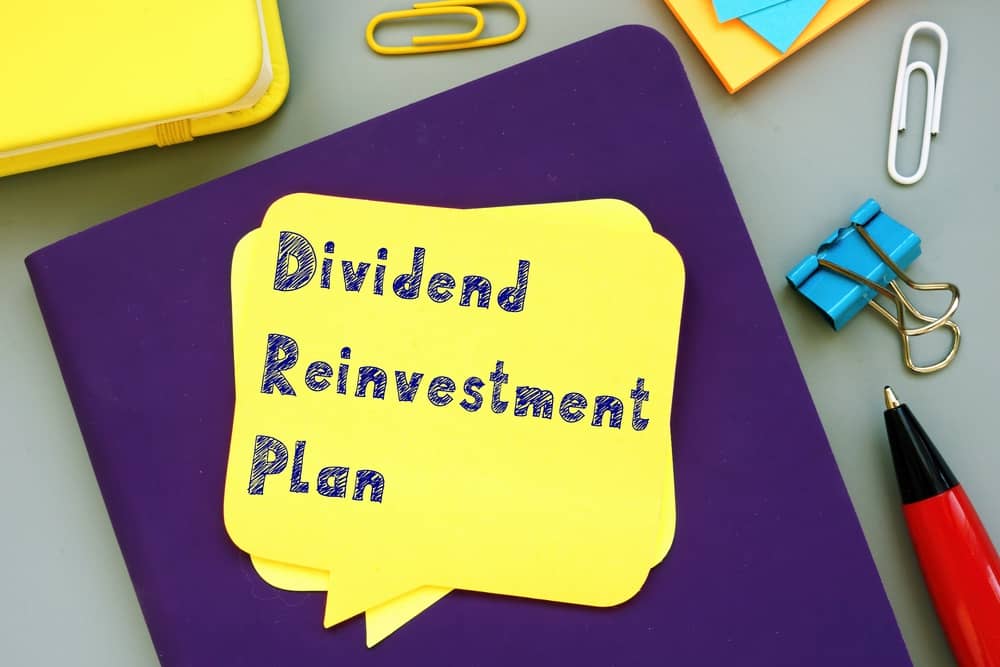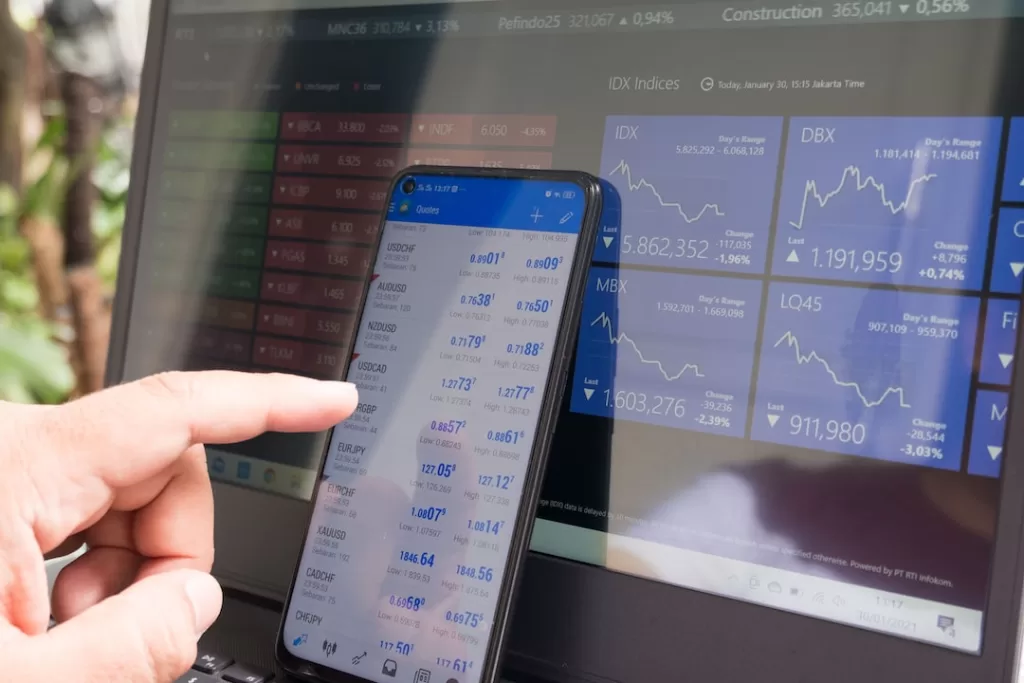M1 Finance is a revolutionary online brokerage platform that allows investors to create and manage their own portfolios. It offers a unique combination of automated investing and customization, making it an ideal platform for dividend investors. Dividend investing is a strategy where investors focus on stocks that pay regular dividends, which are a portion of a company’s profits distributed to shareholders. This strategy is popular among long-term investors who are looking to build wealth over time.
Investing is crucial for long-term wealth because it allows individuals to grow their money and beat inflation. By investing in assets such as stocks, bonds, and real estate, individuals can generate passive income and build a nest egg for the future. Dividend investing is particularly attractive because it provides investors with a steady stream of income, which can be reinvested to compound returns over time.
Disclaimer: This information is general in nature and for informational purposes only. It is not personal financial advice and has not taken into account your personal financial position or objectives. Make sure to refer to a licensed financial or tax advisor.
Table of Contents
Key Takeaways
- M1 Finance offers a platform for dividend investing, which can provide a steady stream of income over time.
- Reinvesting dividends can compound returns and lead to significant long-term growth.
- Setting up a dividend portfolio on M1 Finance is easy and customizable.
- Choosing the right dividend stocks for your portfolio requires research and analysis.
- M1 Finance’s fractional shares allow for maximum dividend yield and diversification.
Understanding the Benefits of Reinvesting Dividends
Dividends are payments made by companies to their shareholders as a way to distribute profits. When investors receive dividends, they have the option to either take the cash or reinvest it back into the company by purchasing more shares. Reinvesting dividends has several benefits.
One of the main benefits of reinvesting dividends is the power of compound interest. When dividends are reinvested, they are used to purchase additional shares of stock. Over time, these additional shares generate their own dividends, which can then be reinvested again. This compounding effect can significantly increase an investor’s returns over the long term.
Reinvesting dividends also allows investors to take advantage of dollar-cost averaging. This strategy involves investing a fixed amount of money at regular intervals, regardless of the stock’s price. By reinvesting dividends, investors automatically buy more shares when prices are low and fewer shares when prices are high. This helps to smooth out market volatility and potentially increase overall returns.
Setting Up a Dividend Portfolio on M1 Finance
Setting up a dividend portfolio on M1 Finance is a straightforward process. Here is a step-by-step guide to help you get started:
1. Sign up for an account: Visit the M1 Finance website and sign up for an account. Provide the necessary information and complete the registration process.
2. Fund your account: Once your account is set up, you’ll need to fund it. You can transfer funds from your bank account or roll over an existing retirement account.
3. Create your portfolio: M1 Finance allows you to create a customized portfolio by selecting individual stocks or using pre-built portfolios called “Pies.” For dividend investing, you can choose stocks that have a history of paying regular dividends.
4. Set your asset allocation: It’s important to diversify your portfolio by allocating your investments across different asset classes, such as stocks, bonds, and real estate investment trusts (REITs). M1 Finance allows you to set your desired asset allocation and automatically rebalances your portfolio to maintain that allocation.
5. Set up automatic deposits: To make investing easier, you can set up automatic deposits into your M1 Finance account. This ensures that you consistently contribute to your portfolio and take advantage of dollar-cost averaging.
Choosing the Right Dividend Stocks for Your Portfolio
| Dividend Yield | The annual dividend payment divided by the stock price |
| Dividend Payout Ratio | The percentage of earnings paid out as dividends |
| Dividend Growth Rate | The rate at which a company’s dividend payments increase over time |
| Dividend Coverage Ratio | The ratio of a company’s earnings to its dividend payments |
| Price-to-Earnings Ratio | The ratio of a company’s stock price to its earnings per share |
| Market Capitalization | The total value of a company’s outstanding shares of stock |
| Debt-to-Equity Ratio | The ratio of a company’s debt to its equity |
When choosing dividend stocks for your portfolio, there are several factors to consider. These include the dividend yield, dividend growth rate, and the stability of the company.
The dividend yield is the annual dividend payment divided by the stock price. It represents the return on investment from dividends alone. A higher dividend yield may indicate a higher income potential, but it’s important to consider other factors as well.
The dividend growth rate measures how much a company’s dividends have increased over time. Companies that consistently raise their dividends are often seen as more stable and reliable investments.
Stability is another important factor to consider when choosing dividend stocks. Stable companies with a history of consistent earnings and cash flow are more likely to continue paying dividends even during economic downturns.
Some examples of top dividend stocks include Johnson & Johnson, Procter & Gamble, and Coca-Cola. These companies have a long history of paying dividends and have demonstrated stability and growth over time.
Maximizing Your Dividend Yield with M1 Finance’s Fractional Shares
M1 Finance’s fractional shares feature allows investors to buy a fraction of a share, rather than a whole share. This is particularly beneficial for dividend investors because it allows them to maximize their dividend yield.
Fractional shares enable investors to fully utilize their available funds by investing in companies with high share prices. For example, if a stock is trading at $1,000 per share and an investor has $500 to invest, they can only purchase half a share without fractional shares. However, with fractional shares, they can invest the full $500 and own a fraction of the share.
By owning fractional shares, investors can increase their dividend yield because they are able to invest in more companies with higher dividend yields. This diversification helps to spread risk and potentially increase overall returns.
Monitoring Your Dividend Income and Performance
Monitoring your dividend income and performance is essential for successful dividend investing. It allows you to track the progress of your investments and make informed decisions about your portfolio.
M1 Finance provides tools and features that make it easy to monitor your dividend income and performance. The platform provides real-time updates on your portfolio’s value, including the dividends received. You can also view detailed reports that show the performance of individual stocks and the overall portfolio.
It’s important to regularly review your dividend income and performance to ensure that your investments are meeting your goals. If a company reduces or eliminates its dividend, it may be a sign of financial trouble and could warrant further investigation.
Strategies for Reinvesting Dividends on M1 Finance
There are different strategies for reinvesting dividends on M1 Finance, each with its own pros and cons. The two main strategies are automatic reinvestment and manual reinvestment.
Automatic reinvestment is a hands-off approach where dividends are automatically reinvested back into the company that paid them. This strategy is convenient and ensures that dividends are put to work immediately. It also takes advantage of dollar-cost averaging by buying more shares when prices are low.
Manual reinvestment, on the other hand, involves manually selecting which stocks to purchase with the dividend income. This strategy allows for more control and flexibility, as investors can choose to invest in different stocks or sectors based on their analysis and market conditions.
The choice between automatic and manual reinvestment depends on an individual’s investment goals and preferences. Automatic reinvestment is suitable for investors who prefer a passive approach and want to take advantage of dollar-cost averaging. Manual reinvestment is better suited for investors who want more control over their portfolio and enjoy actively managing their investments.
Tax Implications of Reinvesting Dividends on M1 Finance
Reinvesting dividends can have tax implications, as the dividends are still considered taxable income. However, M1 Finance handles taxes for dividend reinvestment in a tax-efficient manner.
M1 Finance offers tax-advantaged accounts such as Individual Retirement Accounts (IRAs) and Roth IRAs, which allow investors to defer or eliminate taxes on dividends until they withdraw the funds in retirement. By investing in these accounts, investors can maximize their returns by minimizing their tax liability.
For taxable accounts, M1 Finance employs a tax minimization strategy called “tax loss harvesting.” This strategy involves selling losing investments to offset gains and reduce taxable income. By automatically rebalancing portfolios and strategically selling investments, M1 Finance helps investors minimize their tax liability while still reinvesting dividends.
Diversifying Your Dividend Portfolio with M1 Finance’s Pies
M1 Finance’s Pies feature allows investors to diversify their dividend portfolio by creating a portfolio of multiple stocks or ETFs. A Pie is a collection of investments that can be customized to fit an individual’s investment goals and risk tolerance.
Diversification is important in dividend investing because it helps to spread risk and reduce the impact of individual stock performance on the overall portfolio. By investing in a variety of companies across different sectors and industries, investors can protect themselves from the potential downfall of any one stock.
M1 Finance offers pre-built Pies for dividend investing, such as the “Dividend Aristocrats” Pie, which includes companies that have consistently increased their dividends for at least 25 consecutive years. Investors can also create their own custom Pies by selecting individual stocks or ETFs that meet their specific criteria.
Achieving Long-Term Wealth with M1 Finance and Dividend Investing
In conclusion, M1 Finance is an excellent platform for dividend investing, offering a range of features and tools that make it easy to build and manage a dividend portfolio. By reinvesting dividends, investors can take advantage of compound interest and potentially increase their returns over time.
Setting up a dividend portfolio on M1 Finance is simple and straightforward, and the platform provides tools for monitoring dividend income and performance. The fractional shares feature allows investors to maximize their dividend yield by investing in more companies with higher dividend yields.
By choosing the right dividend stocks, diversifying their portfolio, and utilizing M1 Finance’s tax-efficient strategies, investors can achieve long-term wealth through dividend investing. It’s important to remember that investing is a long-term endeavor, and building wealth takes time. With patience, discipline, and the right tools, investors can achieve their financial goals and secure their financial future.
FAQs
What is M1 Finance?
M1 Finance is an online brokerage platform that allows users to invest in stocks, ETFs, and other securities. It offers a variety of features, including automated investing, fractional shares, and customizable portfolios.
What is dividend reinvesting?
Dividend reinvesting is the practice of using the dividends earned from an investment to purchase additional shares of the same investment. This allows investors to compound their returns over time and potentially increase their overall investment value.
How do I set up dividend reinvesting on M1 Finance?
To set up dividend reinvesting on M1 Finance, you need to enable the “auto-invest” feature for your portfolio. This can be done by going to the “Portfolio” tab and selecting “Auto Invest.” From there, you can choose to reinvest all dividends or only those above a certain dollar amount.
What are the benefits of using M1 Finance for dividend reinvesting?
M1 Finance offers several benefits for dividend reinvesting, including the ability to automate the process and reinvest fractional shares. Additionally, M1 Finance does not charge any fees for dividend reinvesting, making it a cost-effective option for investors.
Are there any risks associated with dividend reinvesting on M1 Finance?
As with any investment strategy, there are risks associated with dividend reinvesting on M1 Finance. These risks include market volatility, changes in dividend payouts, and the potential for losses. It is important to carefully consider your investment goals and risk tolerance before engaging in dividend reinvesting or any other investment strategy.







